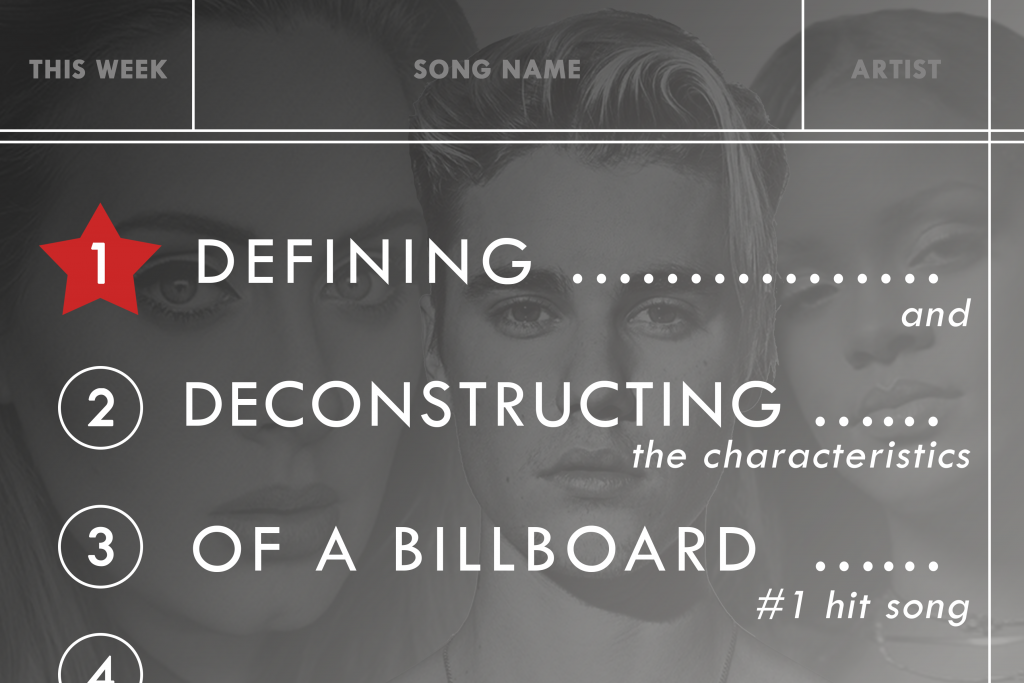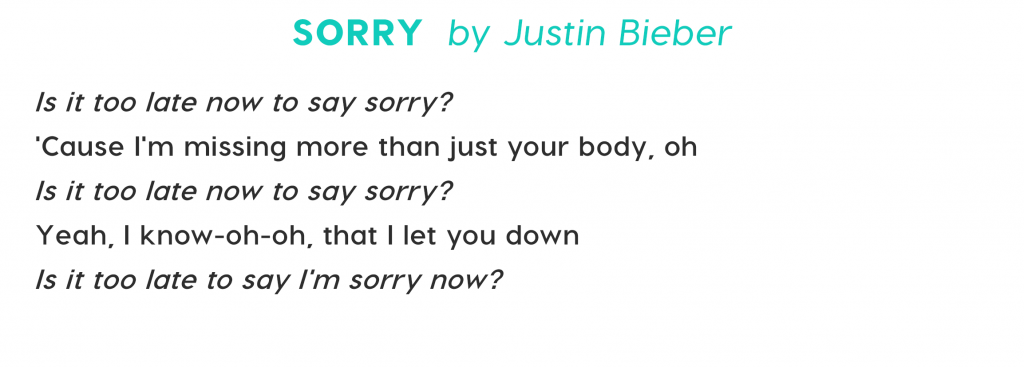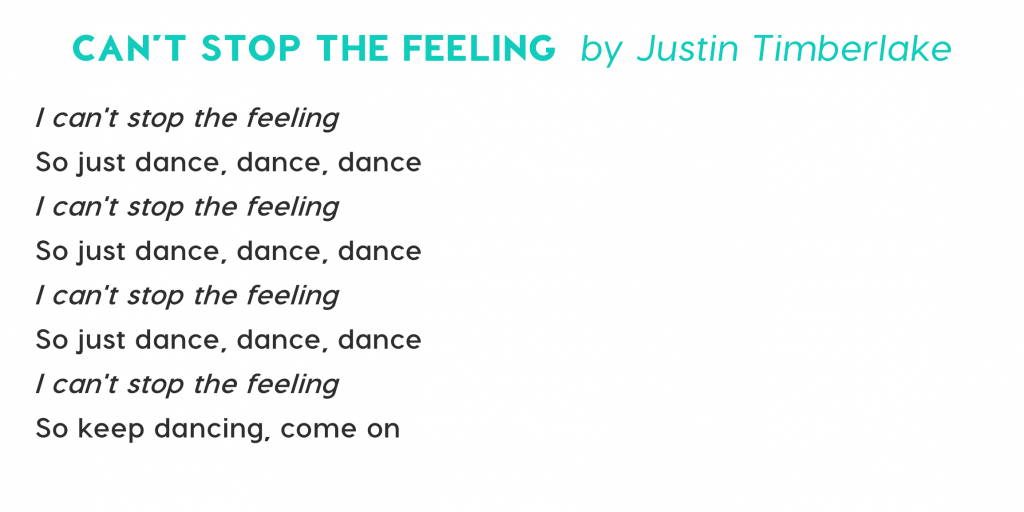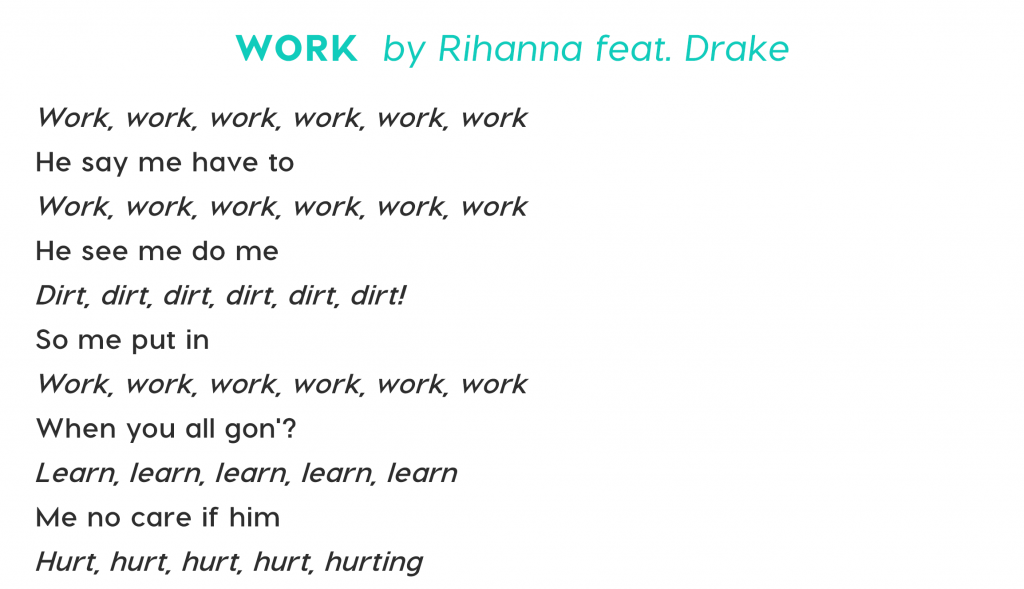+ Learn from Grammy-winning pop artist Kimbra how to harness the full creative potential of your voice in song. Check out her course.
What is it that makes a Billboard #1 song? Why do some songs make it to the top while others flop?
The answer seems to be a difficult cocktail made up of formulaic songwriting mixed with a few unique ingredients that set a song apart; when blended correctly, it’s capable of hooking millions of listeners.
Let’s look at characteristics of the #1 singles from the 2016 Billboard Hot 100 charts and examine them from a songwriting perspective. What similarities do they have, and how can we incorporate those trends when writing our own songs?
Here are the #1 singles from the Billboard Hot 100 charts in 2016 (info courtesy of Billboard).
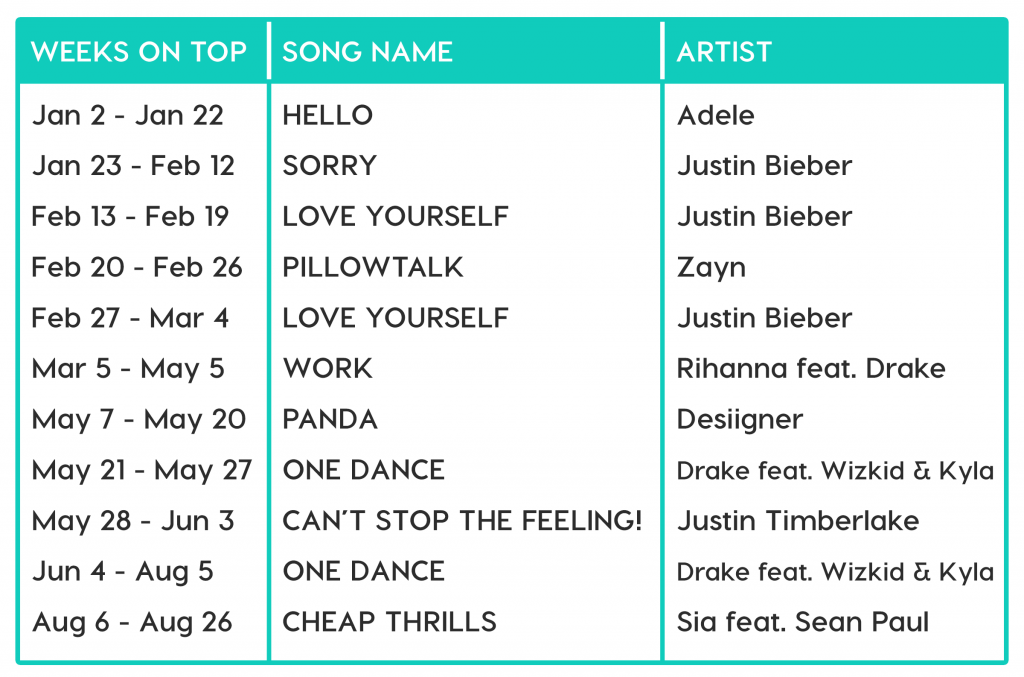
 Verses
Verses
Most of the above songs begin with either a short intro or the first verse. Both “Hello” and “Sorry” vary slightly, starting out with two verses (rather than one), followed by a chorus, then another verse, and then the second chorus.
Two-Part Pre-Chorus
The majority of the songs have a pre-chorus, but “Love Yourself,” “Pillow Talk,” and “Can’t Stop the Feeling!” have what feel like two-part pre-choruses. Though the first part of each the respective pre-choruses could be considered part of a verse, or the second part could sort of be part of the chorus, in most cases the melody, harmony, and lyrical content are different enough to make it feel like we have a separate section. Here are the three examples:
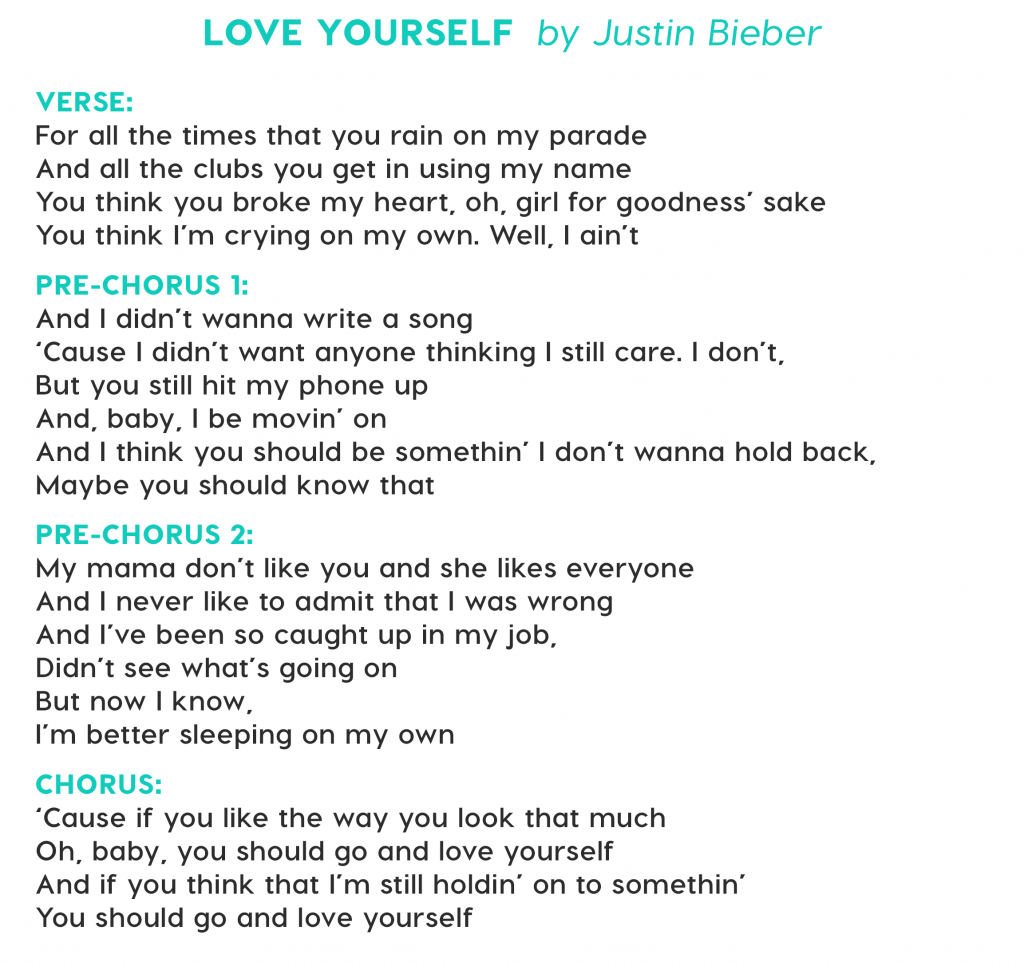
People often confuse the third section (“my mama don’t like you”) for the first half of the chorus, but I think it qualifies as a second pre-chorus for two reasons:
- The melody bears no resemblance to the next section (the chorus).
- It does not contain the musical hook (and is not closely related lyrically to the hook).
Following verse three, the chorus is repeated twice without pre-chorus 1 or this section, which leads me to believe that this section is a part of the pre-chorus.
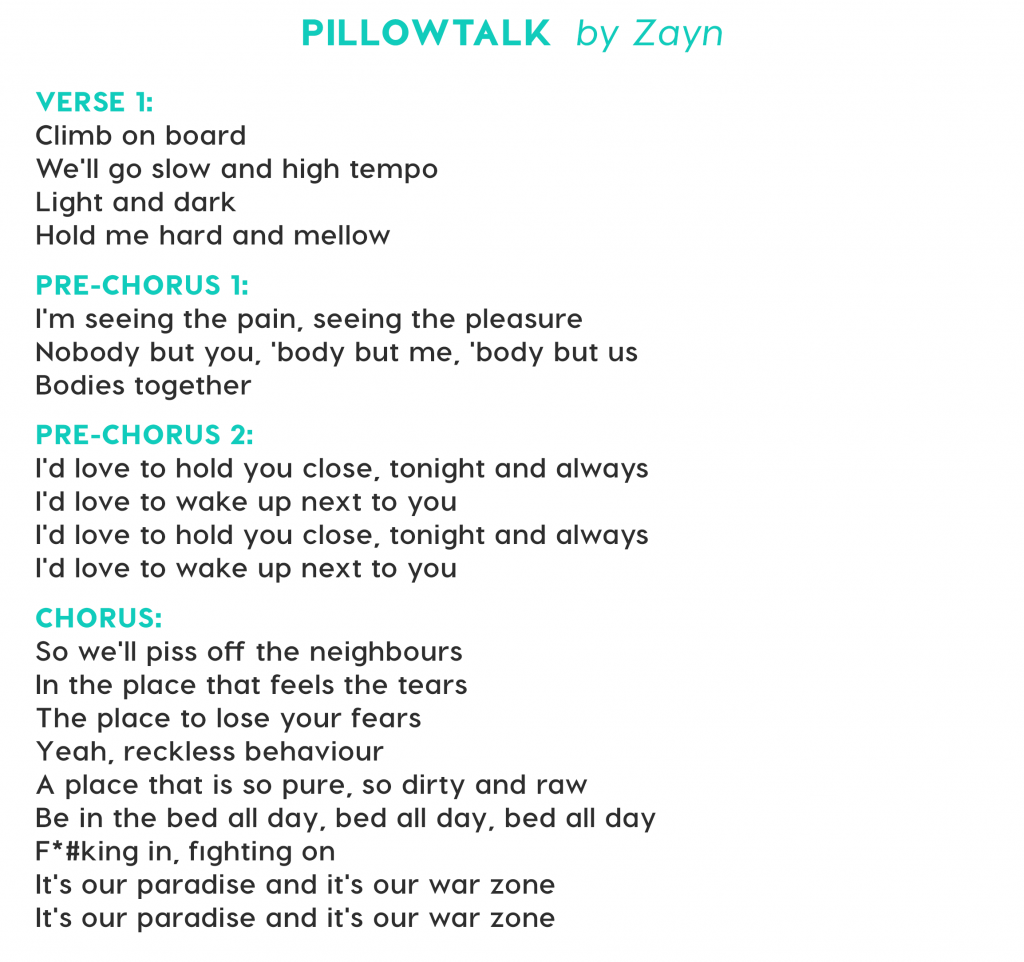
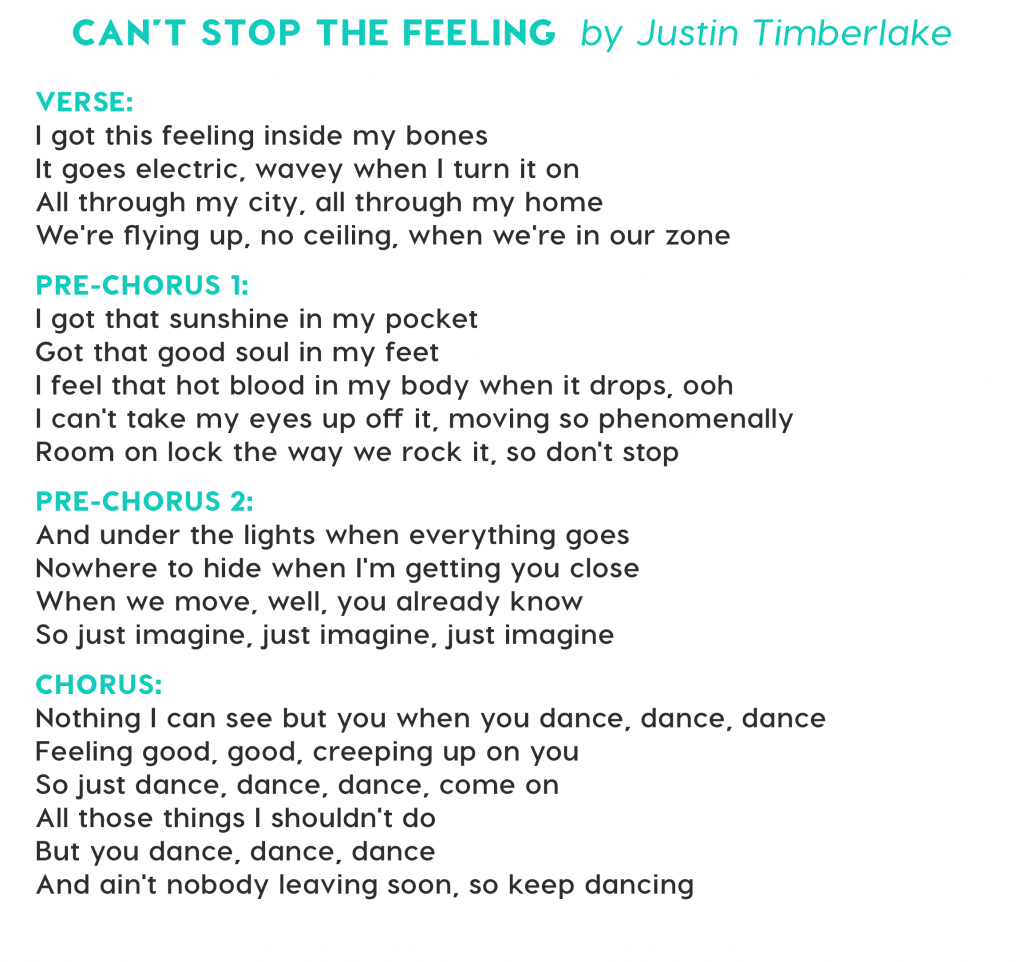
I might also consider calling the first pre-choruses in “Pillowtalk” and “Can’t Stop the Feeling!” post-verse sections — since they don’t necessarily lead directly into their choruses.
Bridges and Breakdowns
The bridges and/or breakdowns of the Billboard #1s tend to be simple and lyrically repetitive.
- “Can’t Stop the Feeling!” has an instrumental breakdown with a repeated “can’t stop the —” vamp, which leads smoothly back into the chorus.
- After Sean Paul does his thing, “Cheap Thrills” simply repeats the second half of the chorus in its bridge.
- The bridge/breakdown section in “Hello” features Adele repeating “anymore” over back-up vocals.
Outros
Several of the songs end with somewhat new material as an outro, overlaid on the old material. They keep it interesting for the listener all the way until the final bars.
- “Can’t Stop the Feeling!” ends with a new line, “got this feeling in my body,” alternating with the “can’t stop the feeling” line from the chorus.
- “Sorry” ends with the chorus chord progression while Justin Bieber sings “sorry” at the end of every line. At the end of the chorus chord progression, Bieber sings the last line of the chorus.
- “Cheap Thrills” introduces a new melody on “la la la la la la” which is repeated along with the “cheap thrills” chant from the chorus.
Takeaways
Though the structure of each song is in some way unique, there are definitely some common threads happening here — the structural placement of verses and pre-choruses, the lyrical simplicity in what would either be considered a bridge or a breakdown, and the appearance of some sort of new material in the outro. Try out a few of these techniques in your own music and see if they work!

Key
The keys of the songs on this list represent a mixed bag of major, minor, and modal key centers. Still, these songs all use the tonic chord in fairly predictable ways, and none of the chord progressions fall very far from the tonic “tree.”
Adele’s “Hello” — F minor (Aeolian)
Justin Bieber’s “Sorry” — C minor (Aeolian, with a strong Ab Lydian pull)
Justin Bieber’s “Love Yourself” — E major (Ionian)
Zayn’s “Pillowtalk” — B major (Ionian, with a strong E Lydian pull)
Rihanna’s “Work” — C# minor (Dorian)
Desiigner’s “Panda” — E♭ minor (Harmonic minor)
Drake’s “One Dance” — B♭ minor (Aeolian)
Justin Timberlake’s “Can’t Stop the Feeling” — C major (Ionian)
Sia’s “Cheap Thrills” — F# minor (Aeolian)
Patterns
Surprisingly, a majority of the songs (“Work,” “Panda,” “One Dance,” “Cheap Thrills,” and “Sorry”) use the same chord progression throughout the entire song, without ever modulating or changing things around. “Sorry” almost follows the same 3-chord pattern throughout, but breaks the pattern for the last line of the chorus to add color and build momentum moving back into the verses.
“Love Yourself,” “Pillowtalk,” “Can’t Stop the Feeling!,” and “Hello,” all change up the chord patterns between sections.
Non-diatonic chords
“Can’t Stop the Feeling!” is the only song with prevalent use of non-diatonic chords (chords outside of the original key). The song is in C major, but the pre-chorus starts with a chord built on the lowered 7th scale degree ( B♭), and also contains an F minor chord, which includes the lowered 6th scale degree ( A♭).
Takeaways
I think a huge reason why so many of these songs don’t actually need to change the chord progression as they move between sections is because they are able to create big enough contrasts in the feel of the music through changes to the melody, the beat, and the electronic production. So don’t ever feel like you HAVE to modulate the key or change up your chords, just to provoke that sense of forward momentum — there are so many effective ways to create contrast.
 Tense
Tense
Every song is written in present tense and refers to the subject in the second person (addressing them as “you”).
Second person is a common perspective for songs in pop music, because it brings the listener into the narrative effectively, yet there are occasional exceptions: Omi’s “Cheerleader,” which was #1 for 6 weeks in 2015, was written in third person. (He sang about a girl using the pronoun “she.”)
One notable (and hilarious) exception is Desiigner’s “Panda,” wherein the subject of the song — the panda — is in fact a white BMW X6 sports utility vehicle, which Desiigner claims looks like the endangered bear. The song is performed from a first person perspective, and rightly refers to the subject in the third person, as “it.”
Hook Placement
Most of the songs have a lyrical hook that alternates with different lines throughout the chorus (“Love Yourself,” “Work,” “Can’t Stop the Feeling!,” ”Sorry,” and “Cheap Thrills”).
Although Rihanna does not repeat the hook, “work, work, work, work, work, work,” after every line, the alternating words have the same rhyme and melody as “work,” giving them a similar feel. I would argue that the hook in this song is more about the repetitive melody and rhythm of the line than the actual word, “work.”
Not all of the songs use the alternating chorus line placement. Here are a few other hook placements in the songs:
- In “Hello,” the hook “hello” is the first word in every section, both the verses and the chorus.
- In “One Dance,” the hook is the first line of the chorus.
- In “Pillowtalk,” the hook is the last line of the chorus (repeated twice). NOTE: Since the word “pillowtalk” is only used once in the song (at the beginning of the second verse), I decided to label “it’s a paradise, and it’s a warzone” as the hook instead. This is the only song on the list where the title is not part of the lyrical hook.
Takeaways
Writing a pop song in second person and present tense is usually a good bet. While you should definitely consider the context of your song when deciding on a hook placement, the alternating lines technique could be a good one to try out.

Though each song that reached #1 on the Billboard 100 chart this year is unique, there are definitely some patterns to take note of if you want to model your songs after them. Here is a quick summary:
- Begin the song with the verse.
- If you’re going to have a bridge or breakdown, don’t overcomplicate it.
- Keep your chord progressions centered around a tonic.
- Don’t use a unique chord progression for each section if the song doesn’t need it.
- Use second person perspective and present tense.
- Use an alternating hook line in the chorus.
- Include a little bit of new material mixed with old material in the outro.
Don’t stop here!
Continue learning with hundreds of lessons on songwriting, mixing, recording and production, composing, beat making, and more on Soundfly, with artist-led courses by Ryan Lott, Com Truise, Jlin, Kiefer, RJD2, and Kimbra: Vocal Creativity, Arranging, & Production.
